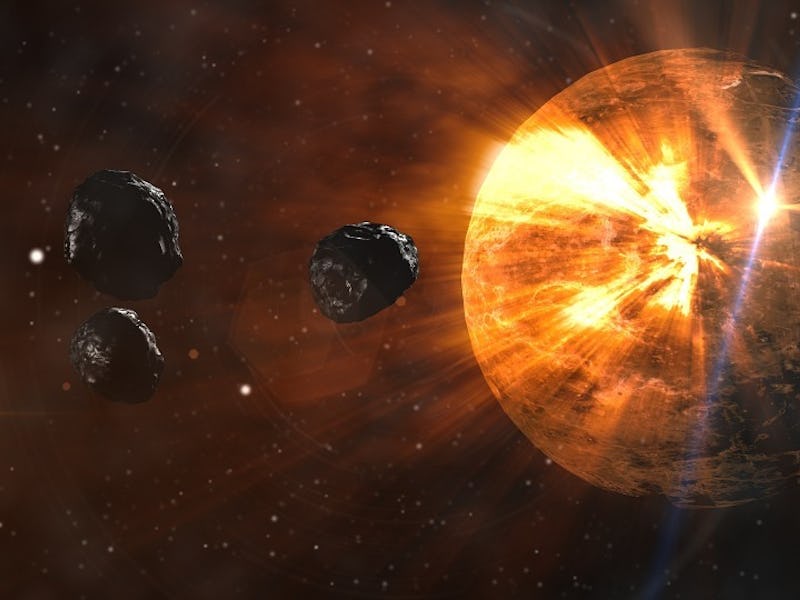Asteroids have slammed into Earth thousands of times — and one could hurl itself at us again. But now, a global collaboration is working together to stop a cosmic catastrophe from hitting Earth.
The last major asteroid collision that made headlines happened on Feb. 15, 2013 in Chelyabinsk, Russia, injuring about 1500 people. We don’t know when the next one will hit us, but now, experts are working together to create technology that can detect and deflect asteroids. On Tuesday in Luxembourg, companies, scientists, and government leaders gathered to discuss initiatives to protect the earth from asteroid impacts.
One such mission is the Asteroid Impact and Deflection Assessment (AIDA) Mission, which will launch the Asteroid Impact Mission (AIM) spacecraft for orbiting the asteroid. AIM would be the first mission to visit binary asteroids, and it will also travel to the smallest asteroid ever visited. AIDA aims to steer an incoming asteroid away from Earth’s orbit.
“I think we are all aware that we on planet Earth are vulnerable to impacts from outside,” British astrophysicist Martin Rees said. “We have evidence of this happening in the past. For the very first time, we are in a position to remove this risk.”
But we’re not just studying asteroids to save ourselves from danger. These missions also open the potential of mining asteroids to future generations. The United States and Luxembourg have already passed legal frameworks for commercializing space resources. Asteroids may contain valuable minerals like gold and silver, building material like iron and titanium, propellent fuel like hydrogen and ammonia, and resources needed for surviving in space, like water and oxygen.
“[AIM] will contribute to asteroid mining because it will greatly improve our understanding of the physical and compositional properties of a small asteroid,” said Patrick Michel, principal investigator of AIM. “…AIM and asteroids in general are a great source of fascination for the public and inspiration for the young generations.”
Tuesday’s event was essentially a preview of Asteroid Day 2017, a United Nations event to raise awareness about asteroids that will take place June 30. Asteroid Day started in 2014, and it’s held on the anniversary of the Tunguska event of 1908 in Siberia, the largest asteroid impact of earth in recent history.
If a major asteroid strikes Earth, it can completely wipe out humanity and change the world as we know it. In the past, large asteroids have killed off dinosaurs, brought on large-scale climate change, and driven the evolution of life. However, these asteroid missions can help us protect Earth — and make life in space more possible in the future.
“We are at the point when we are talking about the solar system as a whole, preventing the third planet from getting hit by an asteroid…changing the structure of the solar system for human good,” American astronaut Ed Lu said. “We are working on something bigger than ourselves. That’s what I find so amazing about this endeavor.”
